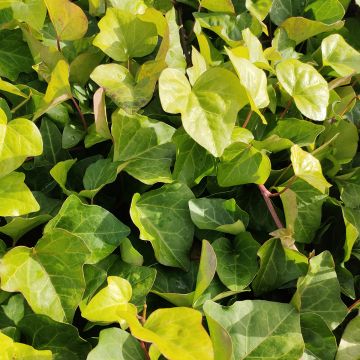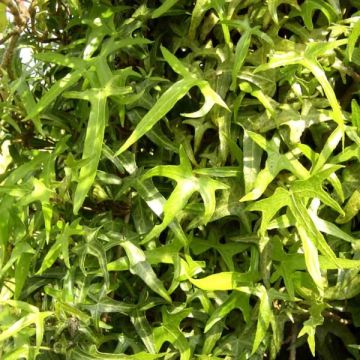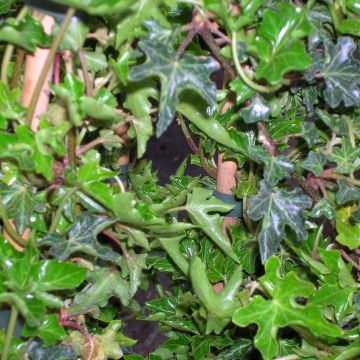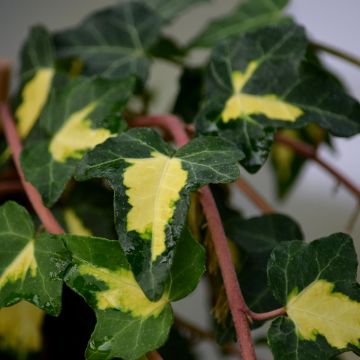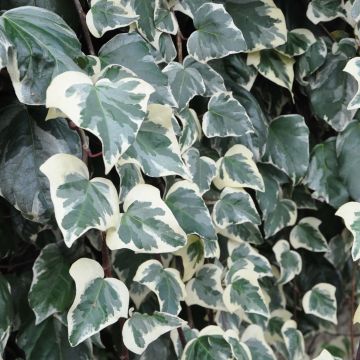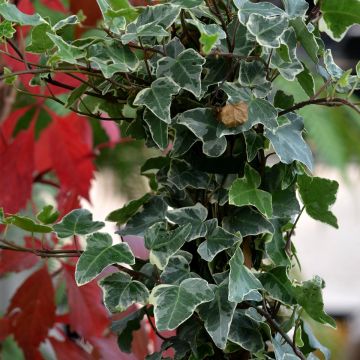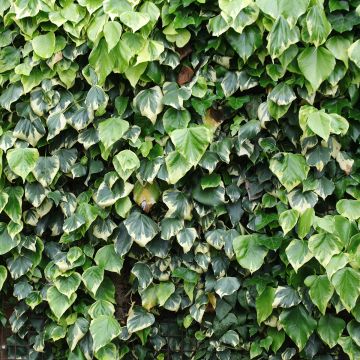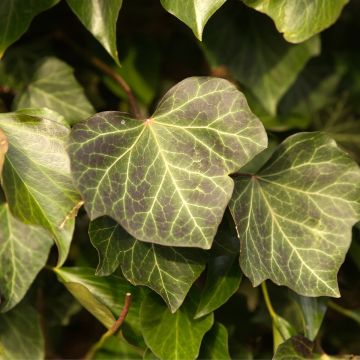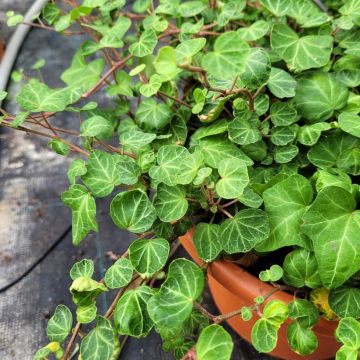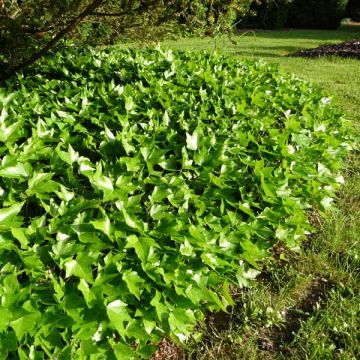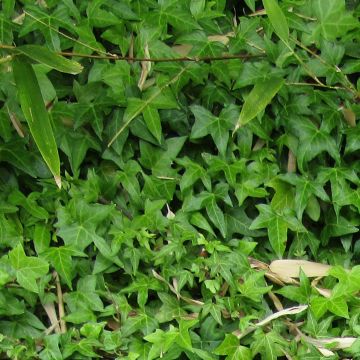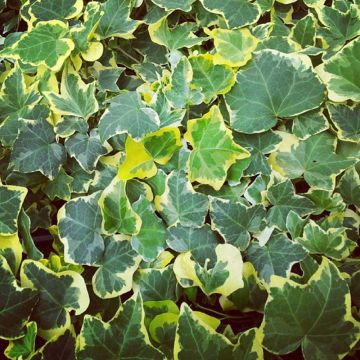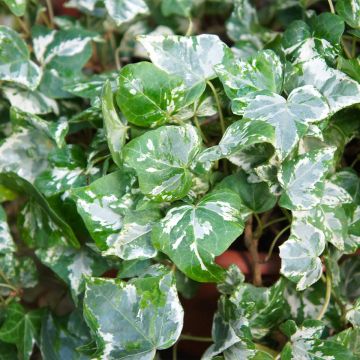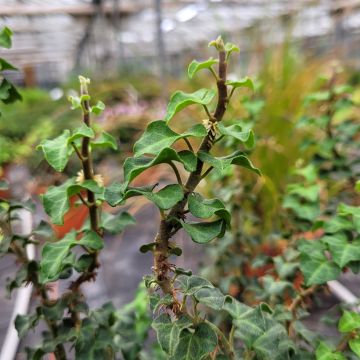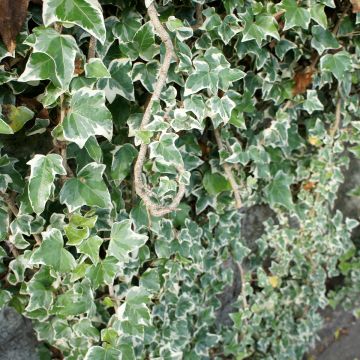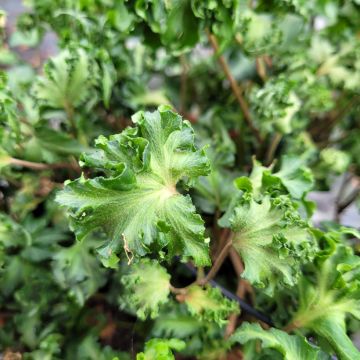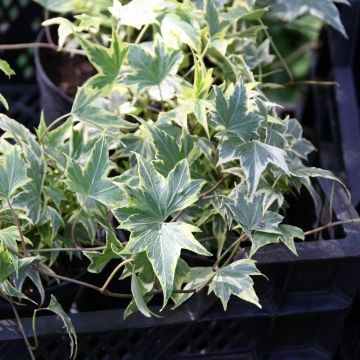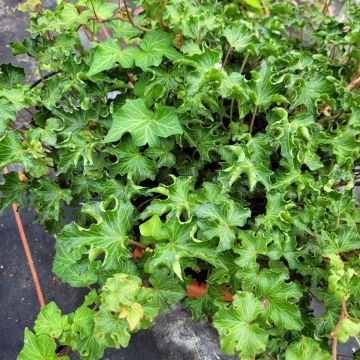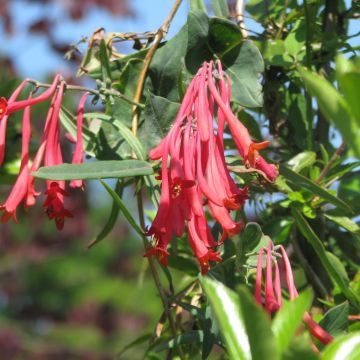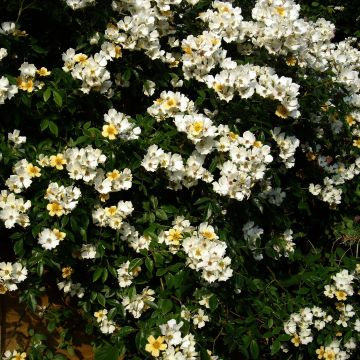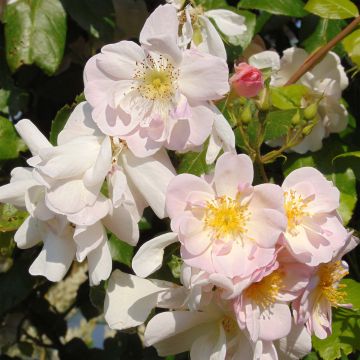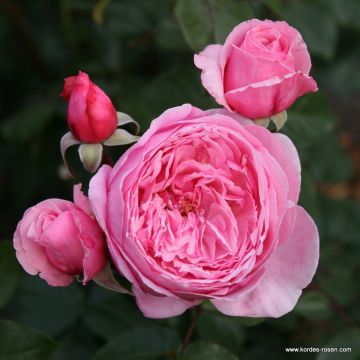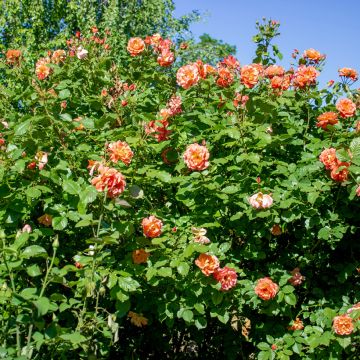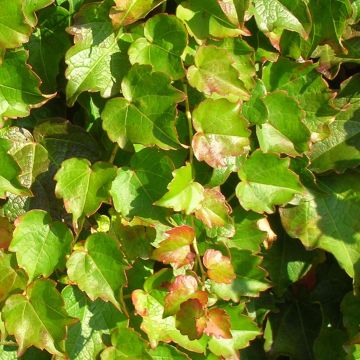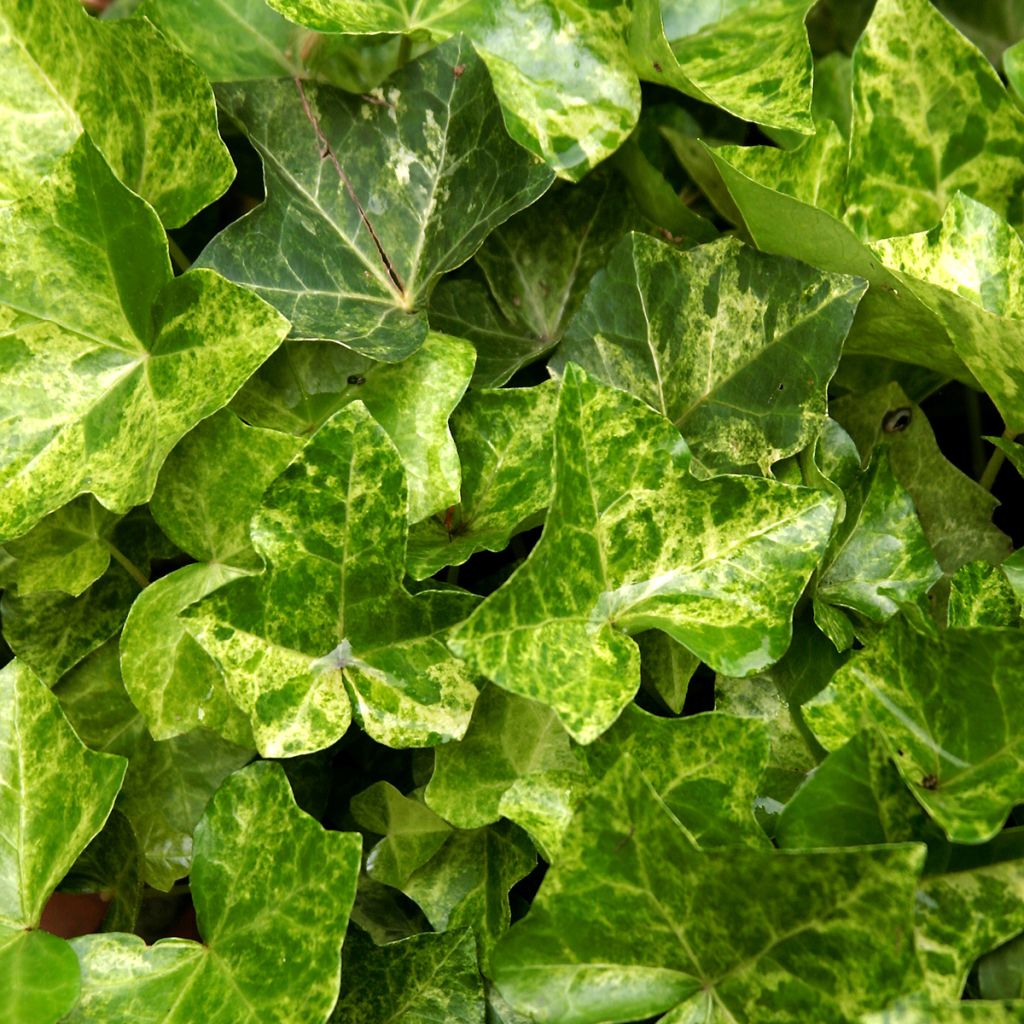

Hedera helix Profesor Seneta - Common ivy
Hedera helix Profesor Seneta - Common ivy
Hedera helix Profesor Seneta
English ivy, Common ivy, European ivy.
Why not try an alternative variety in stock?
View all →This plant carries a 6 months recovery warranty
More information
We guarantee the quality of our plants for a full growing cycle, and will replace at our expense any plant that fails to recover under normal climatic and planting conditions.
From €5.90 for pickup delivery and €6.90 for home delivery
Express home delivery from €8.90.
Does this plant fit my garden?
Set up your Plantfit profile →
Description
The Hedera helix 'Profesor Seneta' is an interesting selection of common ivy for its large, remarkably variegated leaves and natural vigor. Its large, evergreen leaves are triangular in shape and randomly marbled, splashed, and speckled with white, pale yellow, and various shades of green. Ornamental all year round, perfectly elegant, this ivy is a botanical adornment. As a climbing plant par excellence, it can cling to any support using its climbing roots to form a beautiful green wall, or spread out as a wide ground cover.
Ivies belong to the Araliaceae family, they are cousins of Ginseng and fatsias. The Hedera helix 'Profesor Seneta' is a Polish variety selected by Dariusz Wyrwicki. This plant descends from our common ivy, which is found everywhere in our forests, countryside, and gardens. The latter is native to the entire temperate Eurasian zone of the Northern Hemisphere.
The Hedera helix 'Profesor Seneta' is a fast-growing climbing or creeping plant, growing at a rate of about 1 metre per year, and can easily cover an area of 3 square metres. Its evergreen leaves in winter are triangular, divided into 3 to 5 lobes, measuring 8 to 12 cm in all directions. They are carried by thick, green, then greyish, star-shaped hairy branches. Each leaf is different, each presenting varied patterns in a palette of white, pale yellow, light green, lime green, and very dark green. The stems cling to supports on their own with powerful climbing roots. In autumn, its inconspicuous green flowering, in the form of globular inflorescences, is an excellent source of nectar for bees. It is followed by the formation of black-blue berries, toxic to humans but representing an excellent source of winter food for birds.
The Hedera helix 'Profesor Seneta', perfectly hardy, adapts everywhere except for hot or arid exposures. Its superb variegated foliage, however, requires a bright exposure to fully express its potential. This plant is an excellent wall cover, but do not abuse it, as it can damage old facades. On the other hand, a modern wall or a sad and grey cement fence will have little to fear from it as long as one does not attempt to forcibly remove it. It also forms a superb ground cover capable of discouraging weeds at the base of trees in the long term. Associate it with easy-going woodland perennials such as periwinkles, for example. You can also plant it in a large container, from which it will cascade in variegated garlands.
Report an error about the product description
Plant habit
Flowering
Foliage
Botanical data
Hedera
helix
Profesor Seneta
Araliaceae
English ivy, Common ivy, European ivy.
Cultivar or hybrid
Other Hedera - Ivy
Planting and care
The Hedera helix 'Profesor Seneta', which is easy to grow in any ordinary soil, can be planted throughout the year, except during periods of heatwaves and frost. It prefers a fertile, moist, well-drained soil, but is very tolerant of the presence of limestone or clay if the soil is well worked. Once established, it is fairly resistant to drought. Plant it against a wall, in a semi-shaded position sheltered from cold winds to help it establish, and monitor watering during the first 2 years after planting, especially during dry summers. To promote faster growth of new shoots, fix the first ones to the ground (layering). Feel free to rejuvenate the plant by removing old branches. Prune regularly to shape it. Remove any branches that have non-variegated leaves. You can also let it trail on the ground.
For container cultivation, mix 7 parts ordinary soil, 3 parts turf, and 2 parts sand. Water regularly and apply fertiliser every month during the growing season. Keep the substrate moist during winter.
Planting period
Intended location
Care
This item has not been reviewed yet - be the first to leave a review about it.
Foolproof climbers
Haven't found what you were looking for?
Hardiness is the lowest winter temperature a plant can endure without suffering serious damage or even dying. However, hardiness is affected by location (a sheltered area, such as a patio), protection (winter cover) and soil type (hardiness is improved by well-drained soil).

Photo Sharing Terms & Conditions
In order to encourage gardeners to interact and share their experiences, Promesse de fleurs offers various media enabling content to be uploaded onto its Site - in particular via the ‘Photo sharing’ module.
The User agrees to refrain from:
- Posting any content that is illegal, prejudicial, insulting, racist, inciteful to hatred, revisionist, contrary to public decency, that infringes on privacy or on the privacy rights of third parties, in particular the publicity rights of persons and goods, intellectual property rights, or the right to privacy.
- Submitting content on behalf of a third party;
- Impersonate the identity of a third party and/or publish any personal information about a third party;
In general, the User undertakes to refrain from any unethical behaviour.
All Content (in particular text, comments, files, images, photos, videos, creative works, etc.), which may be subject to property or intellectual property rights, image or other private rights, shall remain the property of the User, subject to the limited rights granted by the terms of the licence granted by Promesse de fleurs as stated below. Users are at liberty to publish or not to publish such Content on the Site, notably via the ‘Photo Sharing’ facility, and accept that this Content shall be made public and freely accessible, notably on the Internet.
Users further acknowledge, undertake to have ,and guarantee that they hold all necessary rights and permissions to publish such material on the Site, in particular with regard to the legislation in force pertaining to any privacy, property, intellectual property, image, or contractual rights, or rights of any other nature. By publishing such Content on the Site, Users acknowledge accepting full liability as publishers of the Content within the meaning of the law, and grant Promesse de fleurs, free of charge, an inclusive, worldwide licence for the said Content for the entire duration of its publication, including all reproduction, representation, up/downloading, displaying, performing, transmission, and storage rights.
Users also grant permission for their name to be linked to the Content and accept that this link may not always be made available.
By engaging in posting material, Users consent to their Content becoming automatically accessible on the Internet, in particular on other sites and/or blogs and/or web pages of the Promesse de fleurs site, including in particular social pages and the Promesse de fleurs catalogue.
Users may secure the removal of entrusted content free of charge by issuing a simple request via our contact form.
The flowering period indicated on our website applies to countries and regions located in USDA zone 8 (France, the United Kingdom, Ireland, the Netherlands, etc.)
It will vary according to where you live:
- In zones 9 to 10 (Italy, Spain, Greece, etc.), flowering will occur about 2 to 4 weeks earlier.
- In zones 6 to 7 (Germany, Poland, Slovenia, and lower mountainous regions), flowering will be delayed by 2 to 3 weeks.
- In zone 5 (Central Europe, Scandinavia), blooming will be delayed by 3 to 5 weeks.
In temperate climates, pruning of spring-flowering shrubs (forsythia, spireas, etc.) should be done just after flowering.
Pruning of summer-flowering shrubs (Indian Lilac, Perovskia, etc.) can be done in winter or spring.
In cold regions as well as with frost-sensitive plants, avoid pruning too early when severe frosts may still occur.
The planting period indicated on our website applies to countries and regions located in USDA zone 8 (France, United Kingdom, Ireland, Netherlands).
It will vary according to where you live:
- In Mediterranean zones (Marseille, Madrid, Milan, etc.), autumn and winter are the best planting periods.
- In continental zones (Strasbourg, Munich, Vienna, etc.), delay planting by 2 to 3 weeks in spring and bring it forward by 2 to 4 weeks in autumn.
- In mountainous regions (the Alps, Pyrenees, Carpathians, etc.), it is best to plant in late spring (May-June) or late summer (August-September).
The harvesting period indicated on our website applies to countries and regions in USDA zone 8 (France, England, Ireland, the Netherlands).
In colder areas (Scandinavia, Poland, Austria...) fruit and vegetable harvests are likely to be delayed by 3-4 weeks.
In warmer areas (Italy, Spain, Greece, etc.), harvesting will probably take place earlier, depending on weather conditions.
The sowing periods indicated on our website apply to countries and regions within USDA Zone 8 (France, UK, Ireland, Netherlands).
In colder areas (Scandinavia, Poland, Austria...), delay any outdoor sowing by 3-4 weeks, or sow under glass.
In warmer climes (Italy, Spain, Greece, etc.), bring outdoor sowing forward by a few weeks.

































